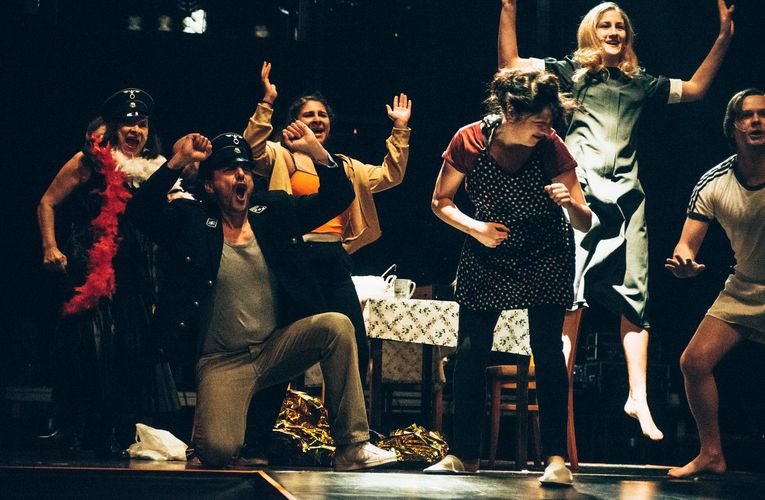
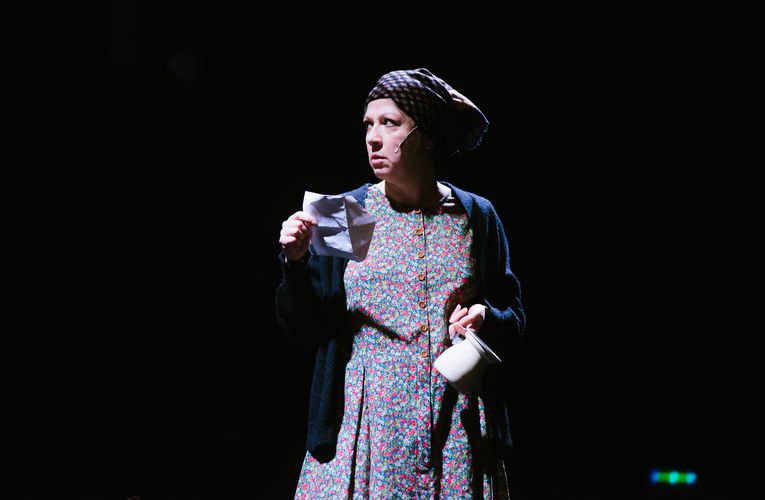
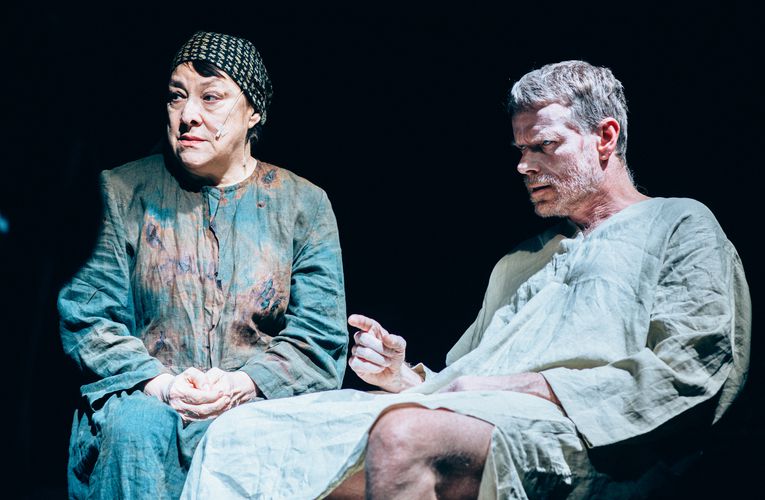
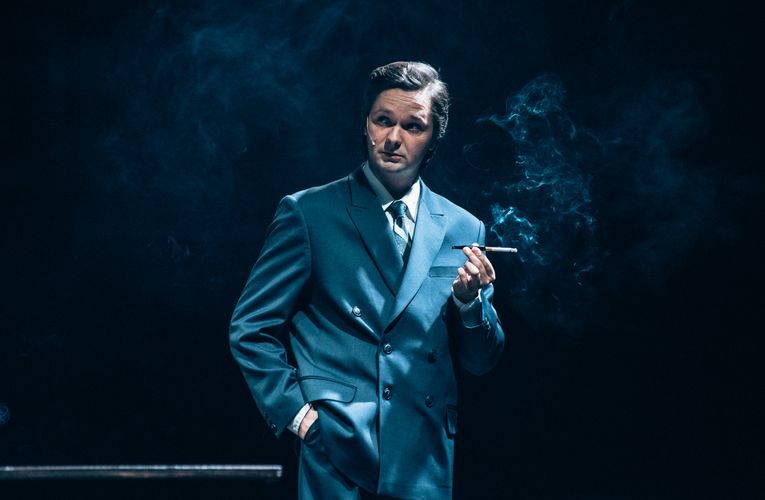
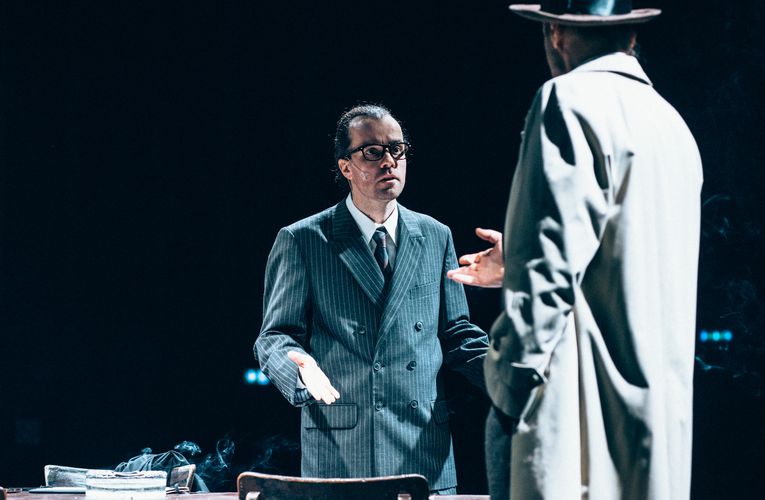
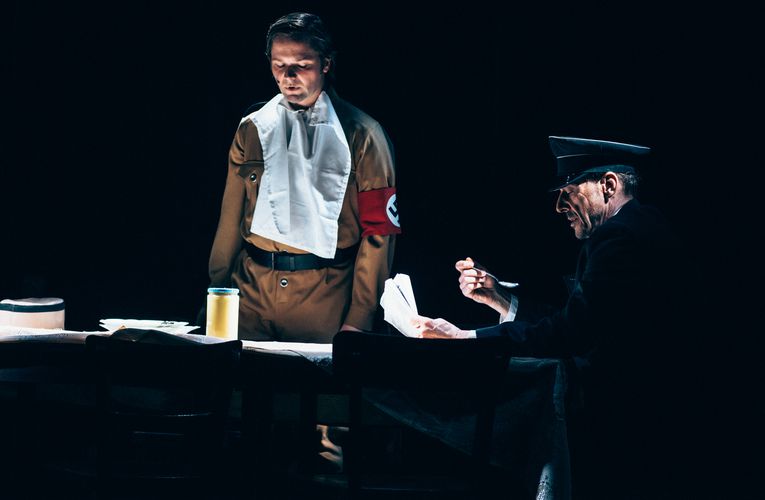
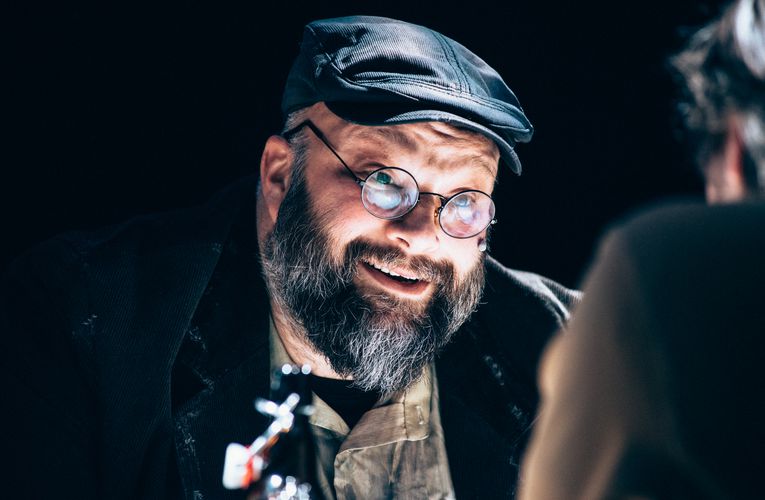
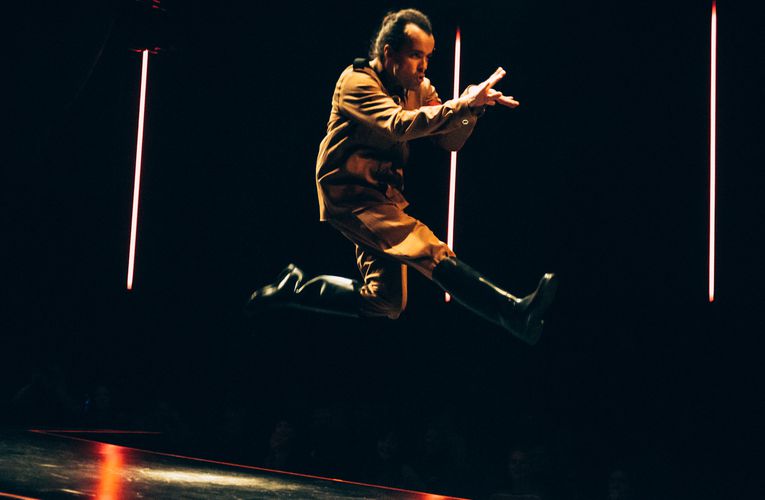
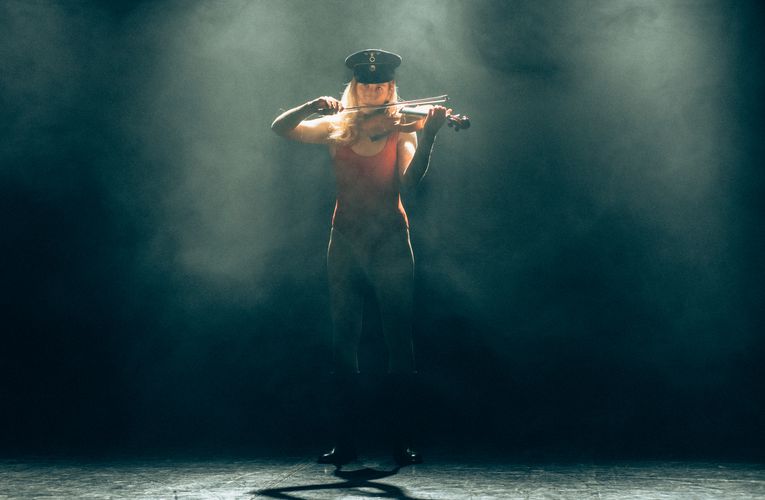

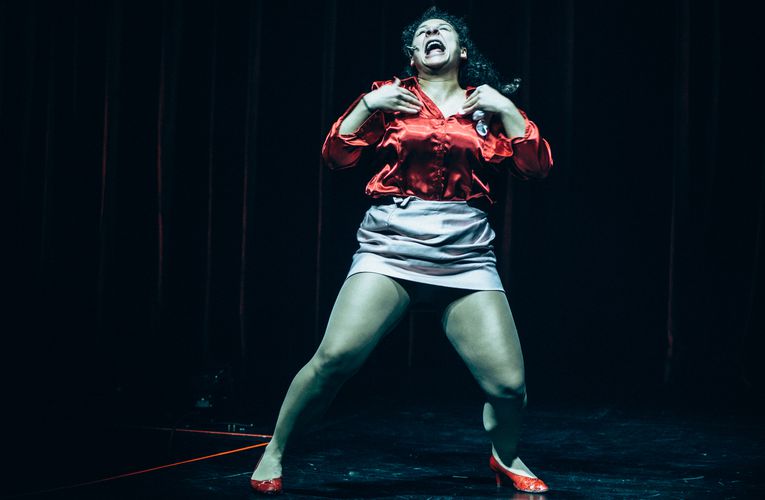
Fear and Misery of the Third Reich
- Jerko Marčić
- Ivana Percan Kodarin/Anja Novak
- Translation: Urška Brodar
- Dramaturgy: Milan Ramšak Marković
- Set design and video: Igor Vasiljev
- Costume design: Belinda Radulović
- Choreography: Ana Dubljević
- Music: Drago Ivanuša
- Language consultant: Mateja Dermelj
- Lighting design: Aleksandar Čavlek
- Sound design: Jure Vlahovič
- Make-up artist: Nathalie Horvat
- Set design assistant: Jera Topolovec
- Language consultant (internship): Zala Reich
- Stage manager: Liam Hlede
Extra material: Milan Ramšak Marković and actors
After centuries of fear mongering, disasters and attempts to mobilise people we seem to be at a point when the nightmare of the present just will not end; so we twirl in this tart and bitter pool exhausted and the only thing we want is our normalcy. But from neither the left nor right they won’t let us go there and both insist on a strategy of extreme fear-mongering manoeuvres.
A leftist: the right set off on a path of radical antifeminism, alt-right, anti-Semitism, fascism, conspiracy theories about the deep state and the great replacement, and will send us off to concentration camps.
A right-winger: the left is a pile of extreme communists who pretend they’re on the side of the working class masses, but in fact work for the capital, they’re obsessed with cultural Marxism and gender equality, but their goal is to destroy the patriarchy, any type of masculinity and family as such. They’re the reason we will be poor again, they will send us all to gulags.
The liberals and the "extreme centre" of the neoliberal capital are standing on the sides and waiting for this cultural war to become a little harsher, so that they can enter loose alliances, provide a semblance of the new normalcy and finally celebrate a total victory.
The more the production progressed, the clearer it became that this is not only about Slovenia, but the entire Europe, the entire world. […] The production clearly shows us that the Third Reich was not born with Hitler but emerged long before him. Nor did the Third Reich die with Hitler, but still persists among us. Perhaps even more so than it did in Adolf’s times. […] Despite humorous inserts, the production left us speechless. Indeed! How to progress to let the world live in love? In love for the disabled, homosexuals, Roma, or Gypsies, and everyone that sticks out of the ‘normal’. But we left the theatre believing that the production was particularly intended for us, Slovenians. That it stuck a mirror in front of our mugs.
The spectators, divided by the stage into two groups, have a double vision – of the actors acting and of the audience sitting on the opposite side reacting. […] Most looks and questions were triggered by the final scene, which, with its presentation of different vulnerable social groups, questions the limits of political correctness and freedom of speech.
[In] their critique of today’s life they already detect the neuralgic points of our mainstream, some burning issues from both so-called political poles, with, for example, the right-wing cravings for dictatorship being evident enough. But it is of course good to predominantly highlight the flaws of the left. We know that nothing pisses a leftist off more than another leftist. And another leftist is always a bad leftist. So, we scamper through a theatre gallery of piss-taking tropes – Luka Mesec, Nika Kovač, keep on fighting, Fotopub, 'afterpartying', sexual abuse, refugees, general leftist idiocy, benign critiques of capitalism, nagging self-definition of modern theatre and so on. Everything, indeed everything is true. And by God, which one of us is not triggered by every single Mladina cover?
The first part of the production staged in the Katedrala Hall of Kino Šiška, where the stage expands from the actual stage in the background into a wide footbridge eating deep into the auditorium (a set design by Igor Vasiljev hints heavily towards fashion shows and thus indicates that we’re witnessing some sort of a ‘catalogue’ of living images that one cannot always take at face value or too seriously), reliably follows Brecht’s script that through the episodes of lives of ordinary people from all social strata sketches a fragile community that is slowly drowning in fascism under the raw burden of poverty, propaganda and intimidation, and also naked violence; Belinda Radulović’s costumes are stylised, yet realistic, ‘functional’, and the same goes for precisely created contributions of the actors, dispersed among the palette of different characters (Janja Majzelj in the bitter role of the departing Jewish wife or Ivana Percan Kodarin as a simple old woman who blurts out a word too many come to mind), while the menacing atmosphere is supported by the music by Drago Ivanuša.
When Sebastijan Horvat is dealing with Brecht, he is at his own origin. Theatre that tells the spectators not to stare so romantically, because we’re talking to you and about you, is immanently his theatre. […] The drama Fear and Misery of the Third Reich did not stop the fear and misery of the Third Reich, and neither will this production change our misery. Art is a document of failure. Excellent actors from the Mladinsko with two guests and with the help of music and other elements accelerate the tempo throughout the performance. Two and a half hours with no interval fly by. But despite all the Brechtian and Horvatian surprises, we – unsurprisingly, really – recommend Fear and Misery of the Third Reich predominantly to those who like explicitly political theatre.
The classical format of representation notwithstanding, the scenes retain their quality and our interest because of the text itself, and the cast is of course its convincing sovereign. But the second part of the production moves to the present time, the classical costumes are replaced by joggers and sports shoes, as on the aesthetic-visual level, this part plays a lot more with the genre of a show, singing and dancing.
The Mladinsko Theatre staged these Brecht’s scenes, collected under the title Fear and Misery of the Third Reich on the stage of the great hall of Kino Šiška in Ljubljana. As part of the theatre production, they are convincing and thrilling, little fascisms emerge also where you don’t expect them. […] This is why the second part of the production tries to answer the question of what is going on with fascism today and what is the role of the left in all of it. Of course, the idea of theatre research of how Brecht’s text resonates, how fascisms resonate today, is welcome. People never learn much from history.
An excellent cast, masterful in the constant changing of roles, communication channels and points of view, presents the context clearly. And it places, in a very Brechtian manner, the spectator’s view to the core of the production as the fundamental force behind the essence of drama. Despite the sharp breaks between individual scenes and the general drama division into fascism then and fascism now, the production functions as wholesome and complete, narratively fluid, and it certainly hits the spot. No spectator can leave the hall without having to mull over its stage materialisation and the key message for a long time.